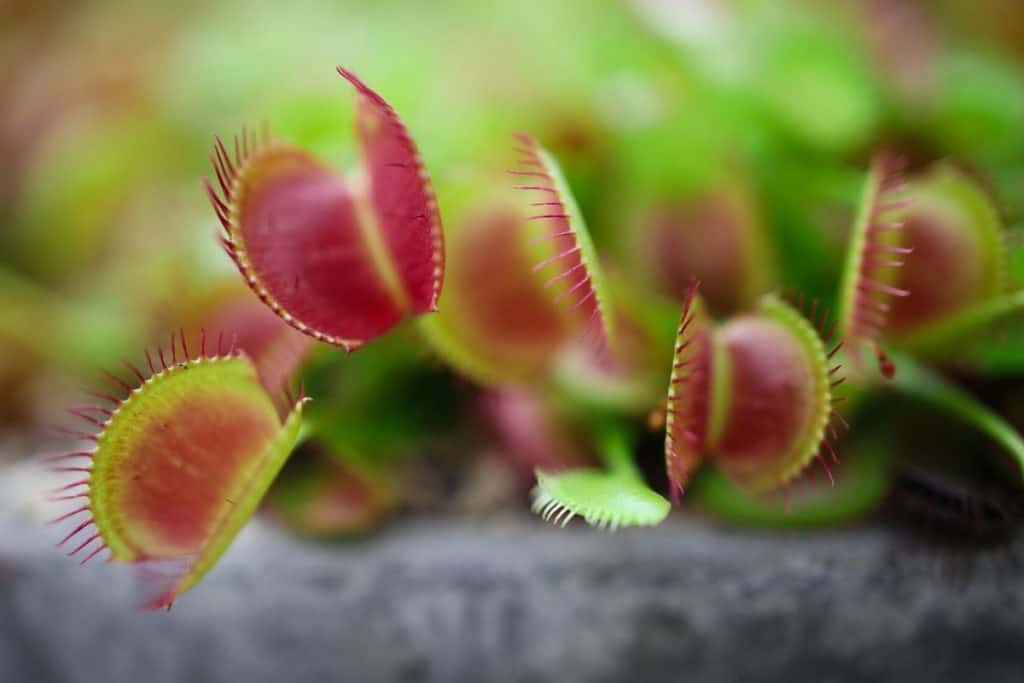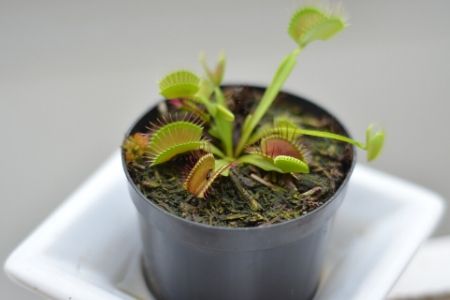
When it comes to watering carnivorous plants, it is well known that tap water is not good for them because it contains too many minerals. But can you water your Venus Flytrap with bottled water?
Giving your Venus Flytrap bottled water is not good, because bottled water contains too many minerals. The Venus Flytrap is naturally used to nutrient-poor soil and rainwater. The minerals in the bottled water will eventually result in a build-up of minerals that will kill the plant.
In this article, we’ll talk more about watering your Venus Flytrap. You’ll also learn which kind of water you should give your Venus Flytrap and which kind of what you shouldn’t give to the plant.
Contents
Why is Bottled Water Bad For Your Venus Fly Trap?
When you look at bottled water, this water is actually spring water with extra minerals put into them to make the water healthier for human consumption.
Minerals are actually really good and necessary for a healthy human body.
But, on the contrary, watering your Venus Flytrap with nutrient-rich water will kill it.
The Venus Flytrap or “Dionaea muscipula” naturally lives in subtropical wetlands like the East Coast of the United States, and North and South Carolina.
The plants that grow in these subtropical wetlands are used to nutrient-poor water and soils. This is why carnivorous plants adapted to nature's environment and created other ways to obtain nutrients, like catching insects.
However, when you water your Venus Flytrap with bottled water, it will not instantly kill it. The minerals in the water will build up in the plant, which will EVENTUALLY kill him. Whether the plant will die after 1 week or 1 month, depends on how strong the plant is and how much minerals are in the water that you are giving to it.
The more minerals in the water that you are giving to the flytrap, the faster it will die. Also if the plant is already weak and you are giving it bottled water, it will also die faster.
Which Kind Of Water Is Best For The Venus Fly Trap?
Now we know that bottled water is not good for a Venus Flytrap, but what about other kinds of water, like filtered water or demineralized water?
Actually, the best-case scenario for the Venus Flytrap is to give it distilled water. This water has zero minerals or other particles in it, which mimics the natural environment of the plant.
To make things easy and clear, here is a table of which water to use and which not to use:
| Use | Don’t use | |
| Reverse osmosis water | x | |
| Rain water/well water | x | |
| Destilled water | x | |
| Bottled water | x | |
| Tap water | x | |
| Purified water | x | |
| Spring water | x |
Distilled water can be bought at your local DIY store, bought online, or you can make it yourself (which I will discuss later in this article).
My Local Shops Don't Sell Destilled Water, What Now?
There are a lot of ways to make your own distilled water, but here I have listed two of the easiest ways to do it.
- The first way to make distilled water is to collect the dew when you boil water. An easy way to do this is here to take a pot, fill it for ⅓ with water, and put in another empty smaller pot in it. After that, put a big lid on the pot, put down a hand full of ice cubes on the lid, and start the fire. The water will boil and the dew will be collected by the lid, which will then ooze into the empty pot. This can a time-consuming way to make your own distilled water but it is FREE! Yay!
- The second way to make your own distilled water is by buying a ZeroWater water filter. With this water filter, you can make your own distilled water. I have the ZeroWater Filter and I use it for all my carnivorous plants. It is easy to use and I also use the water for myself (after adding minerals). This way I know 100 percent what is in the water I drink. 😊
- The last way to make your own distilled water is to get a reverse osmosis kit. This process will remove all the minerals. Reverse Osmosis removes more than 90-99.99% of all contaminants including minerals from the drinking water supply. When you have this kit, your tap water will automatically have no minerals in it. The only downside of this Reverse Osmosis kit is that it is more expensive than the other ways.
Can You Overwater a Venus Fly Trap?
The Venus Flytrap grows naturally in swamps where there is a lot of water in the ground. The best way to water a Venus Flytrap is to use the tray-method. Make sure the plant is in a tray, bowl, or plate with water (distilled water) and kept wet at all times. The plant will consume the water when it needs it.
So, is it possible to overwater a Venus Flytrap?

Actually you can overwater a Venus Flytrap. When you have watered the plant too often, the soil will be too wet. This can result in root rot, molds, and eventually, the plant will die.
To prevent this from happening – only give your Venus Flytrap water when the soil is dry down to about a half-inch or an inch below the surface or use the tray-method, like in the picture on the right.
Have you given your Venus Fly trap too much water?
Don’t worry (yet)…
Here is what you can do: first take the Venus Flytrap out of its pot and look if the roots are still good. If the roots are rotting, carefully cut away the rotting bits to prevent the rot from spreading. You also want to dry out the medium (soil) or repot the plant completely into a dryer medium.
After that, you can treat it as a normal plant and cut down on watering.

Leave a Reply